What a fantastic day! Today we got brave and scheduled a personal tour. We were joined by a couple of our new friends and had a perfect (and full!) day in Rome.
Our first stop was the Catacombs of St. Sebastian. Discovered in 1920 the Catacombs of St. Sebastian were a 2nd Century Christian cemetery for more than 300 years. It contains three levels of burial crypts; the first level is 15’ below the surface. The third and final level is 45’ below the surface. There are more than 7 miles of tunnels built into volcanic rock, and each tunnel contains a variety of tombs and relics. Some tombs are for one person, some for an entire family. Loved ones would have come to the tombs to honor their dead with flowers or sacred oils just as we do with flowers on cemetery graves today. Graffiti on the walls include prayers, poems and tributes to the apostles Peter and Paul. More than 600 individual prayers have been found. Some of the tombs contain headstones telling us about the person(s) buried here. There are many tombs for small children. One crypt is for a 75-year-old Roman man who converted to Christianity. St. Sebastian, for whom the tombs are named, was also buried here. He was a soldier in the Roman army who created to Christianity after a Christian woman healed his wounds from a poison arrow. The arrow was said to have gone all the way through his body, entering on one side and sticking out the other. Having survived the poisoned arrow St. Sebastian was later persecuted and whipped to death for his beliefs.
In the 3rd Century AD a mausoleum was built above the catacombs. St. Sebastian’s remains were moved here. In the 4th Century AD a cemeterial basilica was built on the spot to pay tribute to the apostles Peter and Paul. The chapel next to the Catacombs was built in 1612. Only a portion remains today – the original building was three times larger than the one we visited. The wooden ceiling is amazing, as is the artwork, including a bust from the famous Italian sculptor Lorenzo Bernini.
Our next stop took us from 12th Century AD to 1st Century AD. We began with the Basilica of St. Clement, which was known to have been built on top of a 4th Century AD basilica. The original basilica was destroyed by the Normans in 1084. The Pope repaired it as best he could, but it was found to be unsafe around 1100 AD. The decision was made to fill it with dirt and use it as the foundation for the current church. This was discovered in 1857. What wasn’t know was that the 4th Century Church was built on top of yet another building, a private residence from the 3rd Century. The residence was owned by a man named, coincidentally, Clement, a Roman who converted to Christianity and secretly allowed church services to beheld in his home. A narrow alley separates this home from a 1st Century AD building, thought to be an apartment complex. Within that building is evidence of a Mithraic religious site, a religion that was outlawed in 395 AD. The 1st Century building provides the cornerstone of the entire complex of the current structure. Yet another building was recently found below the 1st Century building, but excavations have not yet begun.
Our final stop of the morning was the Crypt of the Capuchin Friars. Made completely of human bones, this may seem a creepy place to visit, but when you understand the context and purpose of its construction, it’s kinda cool. Created in the 18th Century, the crypt contains the remains of 3700 monks arranged in a variety of ways to decorate hallways and six distinct rooms. The bodies of the monks were exhumed because there was no longer room in the monastery’s small cemetery for new bodies. The exhumed bodies had to go somewhere. It is unknown who came up with it, but someone had the ingenious idea to use the monks’ bodies to create a positive representation of Christian faith. The main message of the crypt became: Death is nothing to be afraid of. Where you are now is what used to be; where we are now is what will be. The crypt became a place of honor, and a few more monks were buried among the bones, a tribute to their service and commitment to Christ. Everything in the crypt is made from human bones – lamps, altars, wall decorations…everything.
Unfortunately, we were unable to take pictures in any of these first three stops, but Pam found some on the Internet that will give you some sense of what we experienced.
We had a wonderful lunch at a local Italian restaurant – SO much delicious food and great company at an incredibly low price – and then it was off for photo opportunities at the Piazza Navona, the Statue of Reunification and the Coliseum. Our drive, Achile, got us back to the ship just 15 minutes past the All Aboard time, but they let us back on anyway. It was a fantastic day!

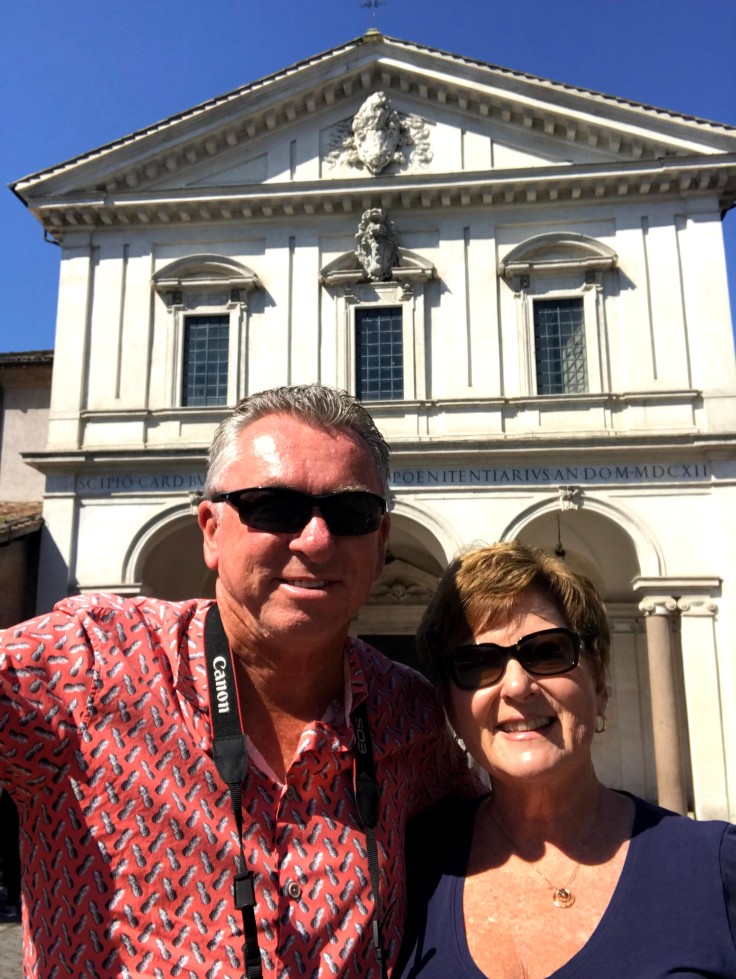
At the Basilica of St. Sebastian 
The main entrance to the Catacombs of St. Sebastian contains hundreds of artifacts found in the catacombs. 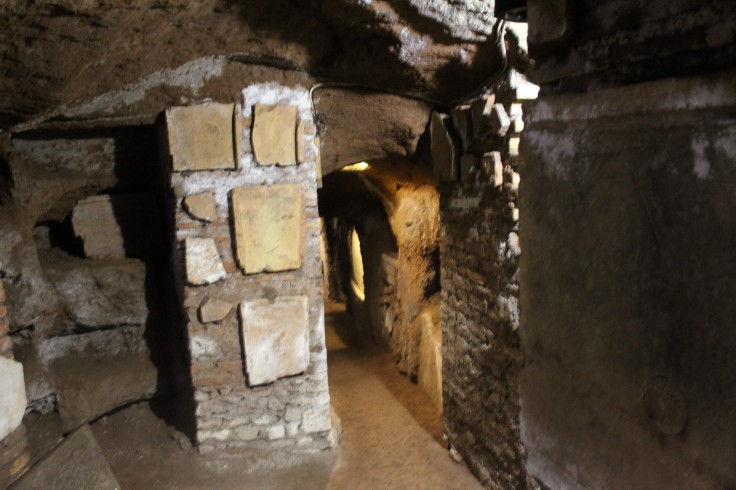
Preparing to enter the catacombs 
Descending the stairs to the second level of the catacombs 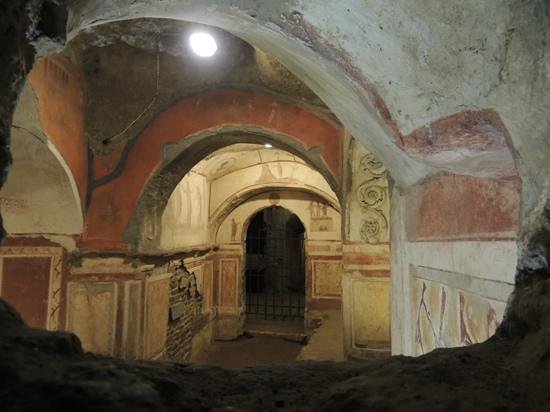
Some of the crypts are very ornate. 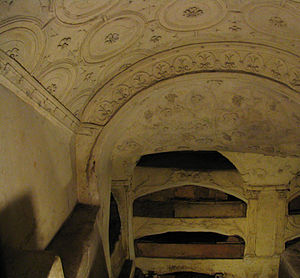
Example of a family crypt. 
The 1612 chapel that stands next to the church – the original full structure was 3 x bigger 
The ceiling is made entirely of wood – the gold is paint 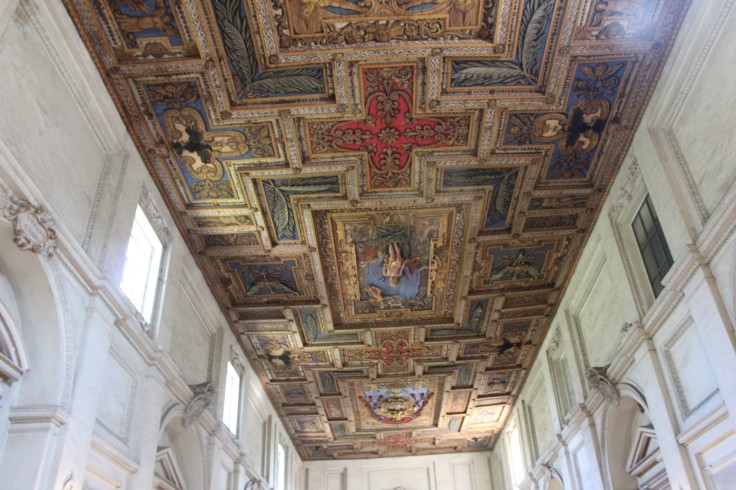
Incredible craftsmanship on the ceiling 
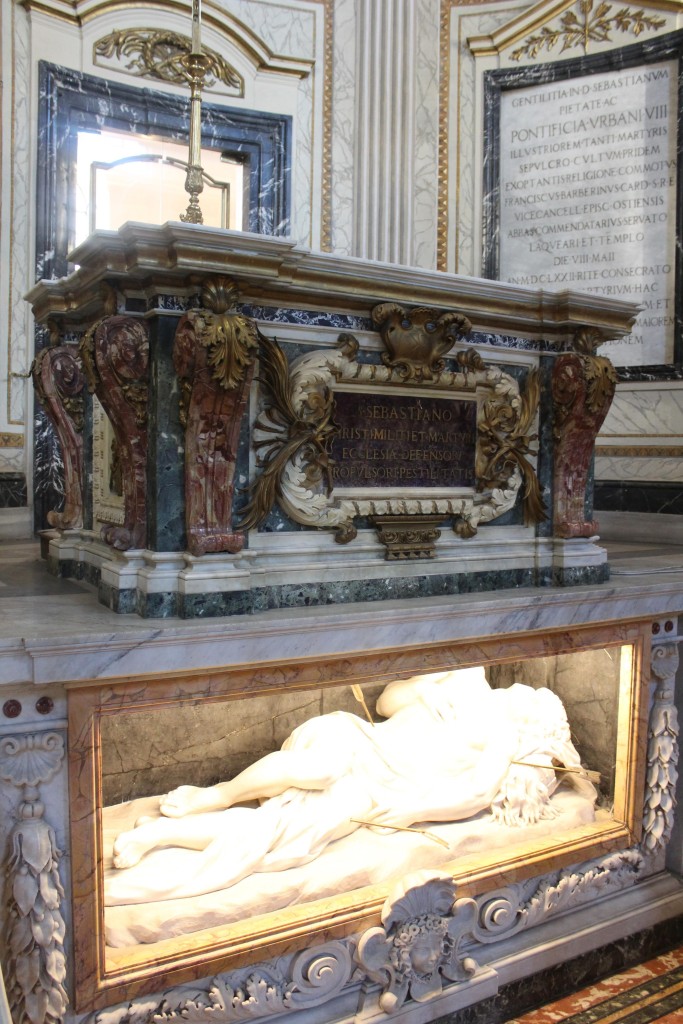

Bernini bust of Christ 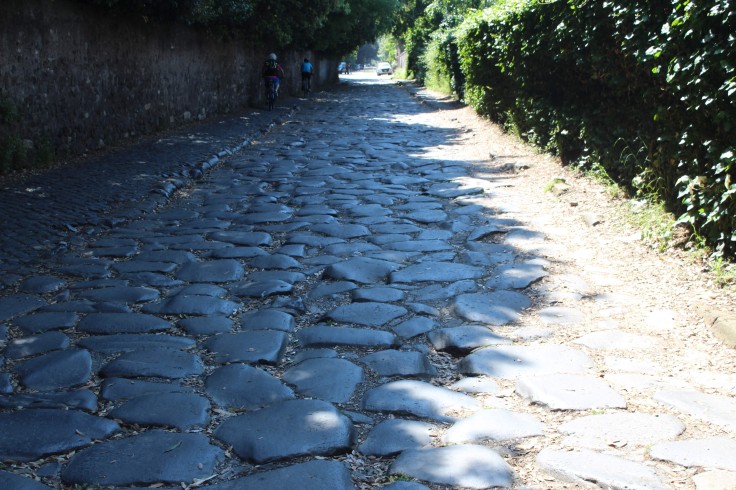
The Appian Way road is one of the oldest in human history 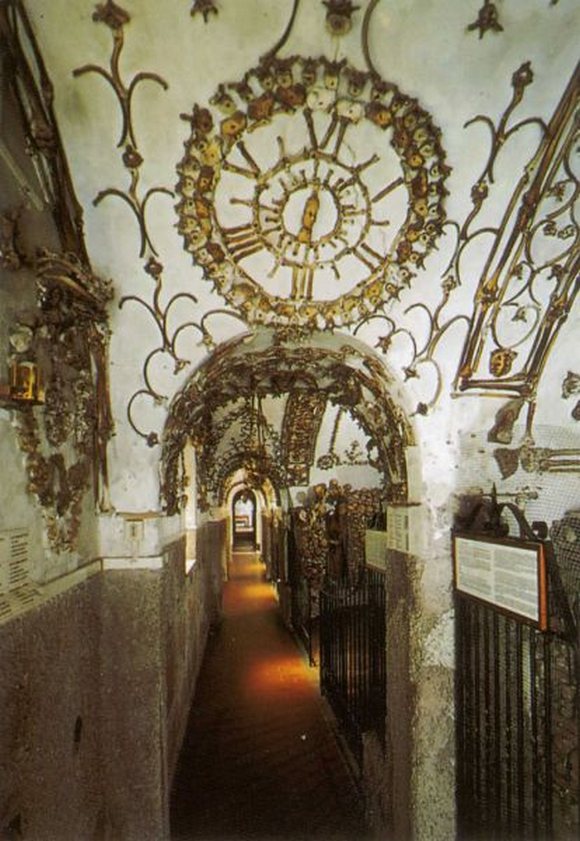
The ceiling of the Crypt of the Capuchin Friars is decorated entirely with human bones. 
Crypt of the Resurrection 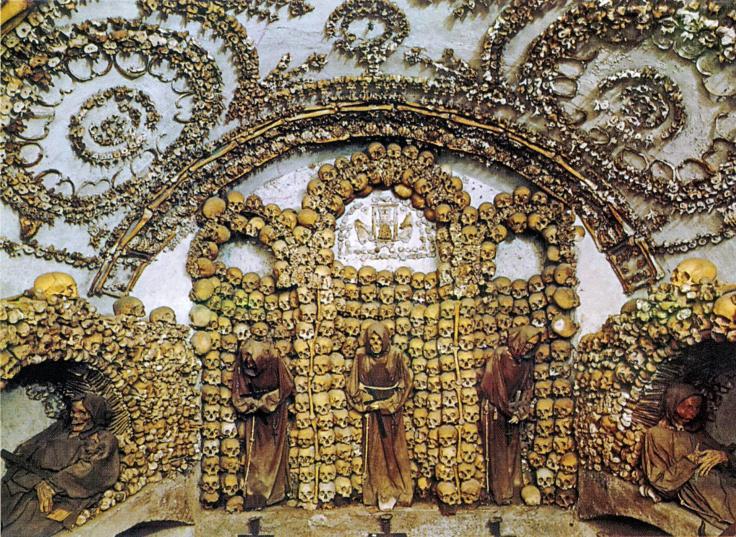
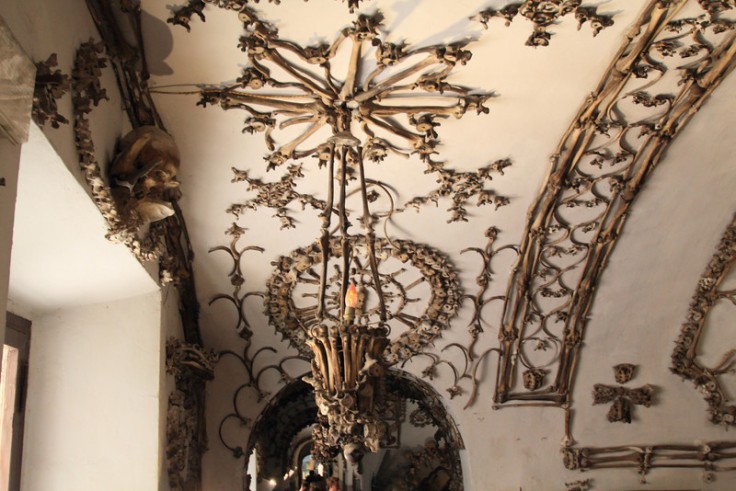
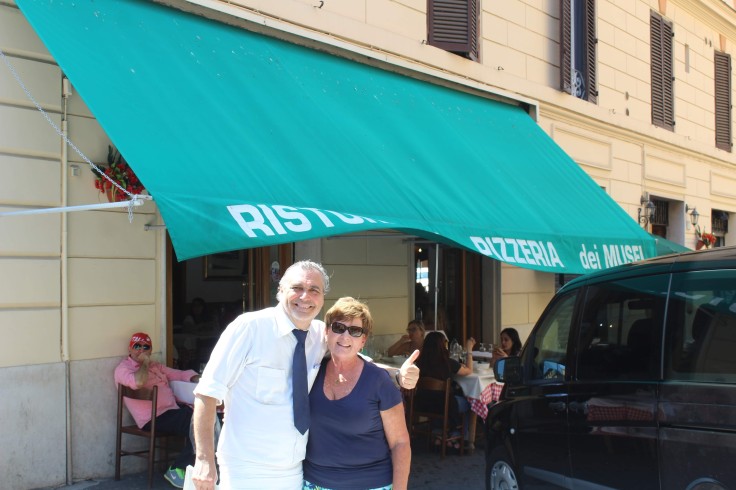
Pam with the owner of the restaurant where we had lunch 

Piazza Navona Square 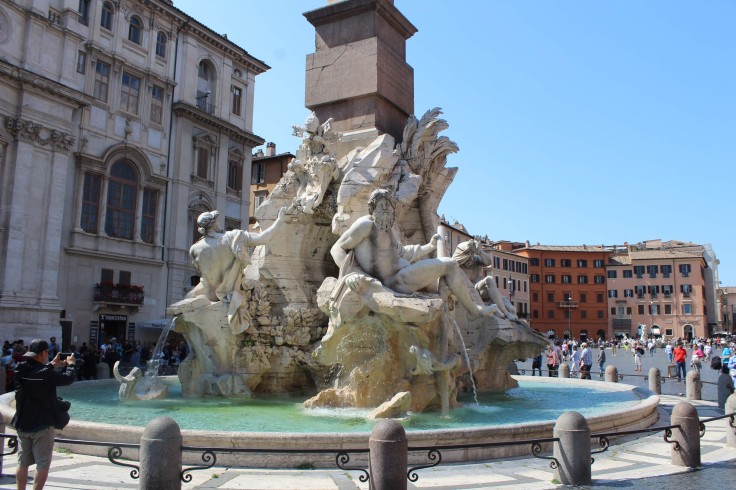
Fontana dei Quattro Fiumi 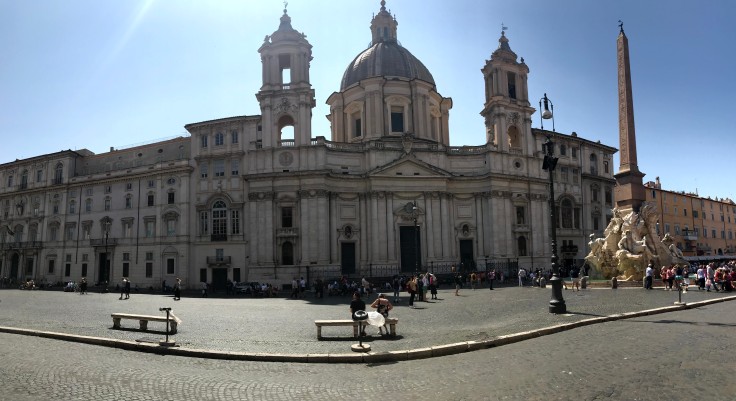
Chiesa Sant’Agnese in Agone 
Vittorio Emanuele II Monument built in honor of the first king of a unified Italy 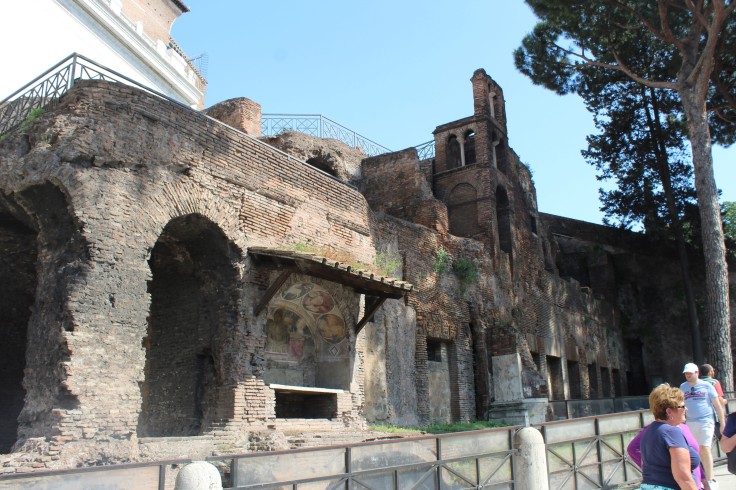
Ruins turned public bathrooms near the Vittorio monument 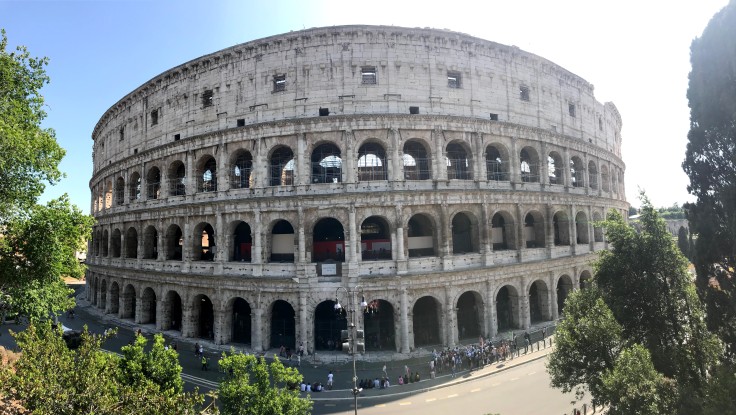
The Coliseum was built in 80 AD with 80 entrances. Its 55,000 spectators sat in order of rank 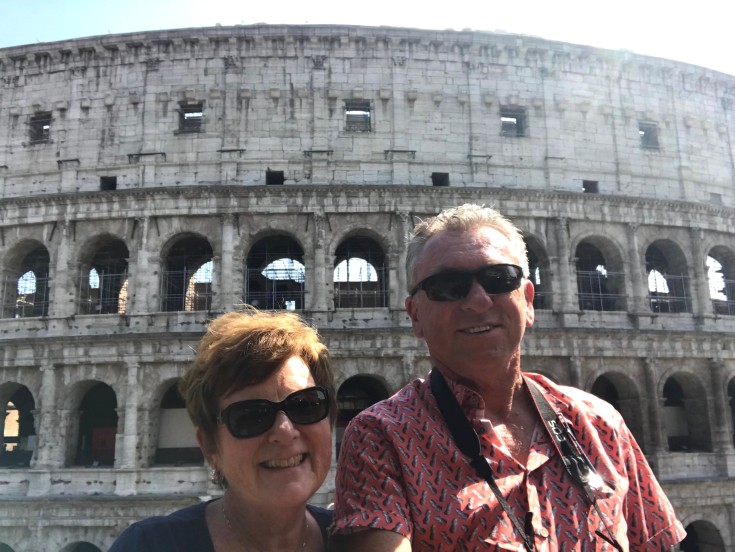
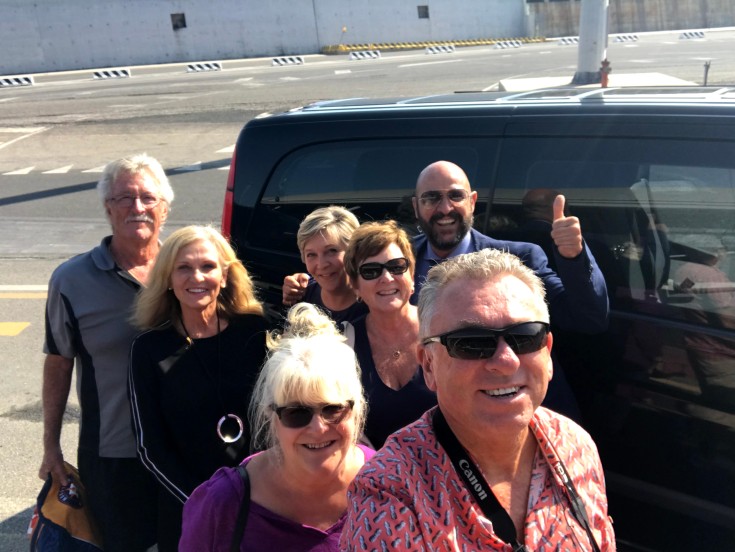
The happy group returns just in time! From back left, Wayne and Nancy Jones, Tracy (Gail’s sister), Pam and Achile. In front Gail Bernabucci.
